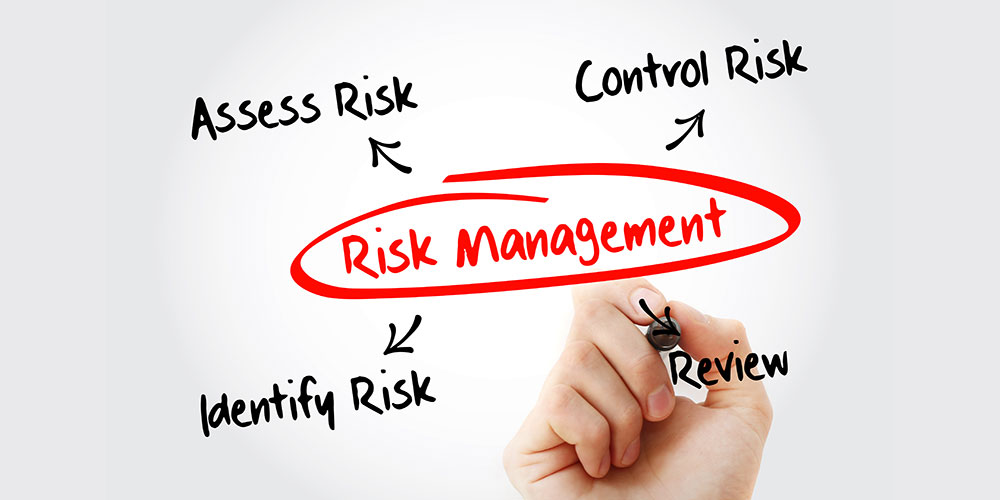Security is a fundamental human need. When people feel safe, they are likely to be more productive, perform better at work and school, and have overall better physical and mental well-being. Campus safety, in particular, has been linked to improved college student and institutional outcomes. Yet, only 55% of students attending rural colleges and 36% attending colleges in large cities report feeling very safe on campus.
The concept of security may sound simple but the practical application is often complicated by competing objectives. Institutions want to maintain an open and inviting campus for current and potential students, employees, and visitors, but they must also ensure risks, threats, and vulnerabilities are effectively addressed. A comprehensive security assessment can help leaders find the right balance to achieve a safe, secure, and welcoming environment for everyone.
Assessing Campus Security
Security assessments evaluate an organization’s existing or planned security measures and how they align with best practices for mitigating potential threats. Assessments must be objective and ensure operations and policies protect the organization’s people and property by examining all security program capabilities and resources, including:
- Strategy, structure, and funding
- Organization, staffing, and training
- Policies and core processes
- Physical and technical security
- Technology integration and effectiveness
Existing physical and technical security assets should also be identified and analyzed for performance optimization. Appropriate areas for assessment include:
- On-site security personnel
- Visitor management, perimeter security, lighting, and video surveillance systems
- Access control, key and lock control, and intrusion detection systems
- Fire and life safety, building emergency, and backup power supply systems
- Duress alarms, emergency communications, and response plans
- Mail and package delivery processes
Each of these areas contains a host of details for further examination. For example, a key and lock control assessment should not only affirm that policies and practices exist but that these practices also align with policies. This evaluation includes answering a series of questions, such as who is responsible for maintaining an inventory of keys, how are keys issued and recovered from terminated employees, what methods are used for logging every issued key, and how are lost or missing keys reported.
Each area requires a similar detailed analysis to produce a holistic inventory and assessment of security-related measures and assets, which is essential to identify vulnerabilities and gaps. The analysis also generates a threat and vulnerability profile based on the local environment, criticality of operations, information sensitivity, facility size, personnel numbers, and regulatory mandates.
4 Advantages of a Holistic Security Assessment
Promoting safe campuses and facilities and developing effective security policies and procedures should be a foundational concern for every leader. A comprehensive security assessment offers several advantages, providing organizations with the information needed to improve security and safety, capture program efficiencies, and develop successful strategies for managing risk.
Advantages include:
1. Offers a fresh perspective. Within the healthcare and education environments, it is common to find security leaders with a career of experience in their respective fields. While this deep expertise is extremely valuable, an outside security consultant’s diversity of experience can prove helpful when looking to refresh strategies for a security program. Having a “fresh set of eyes” can help identify long-present deficiencies, gaps, and vulnerabilities and prevent leaders from becoming habituated and desensitized.
An outside security consultant offers years of experience implementing solutions for a wide range of facilities and operations in different industries. Their wealth of knowledge in security trends, issues, and best practices can help organizations tackle security challenges and update their security programs. What may be a routine issue or condition on a campus may pique the interest of a security assessor.
2. Allows for greater awareness of gaps and vulnerabilities. Understanding the gaps in your organization’s physical and technical security is a critical first step in prevention-focused security risk management. In addition to analyzing potential risks, threats, vulnerabilities, and other concerns that challenge core security programs, a comprehensive security assessment will offer mitigation measures tailored to the distinctive characteristics and culture of the organization. Although not all gaps and vulnerabilities can be immediately addressed for a myriad of reasons, knowledge of their existence provides an opportunity for awareness and response while longer-term solutions are developed.
3. Provides a complete picture of security practices. Knowing the current state of the security environment across campus is an important step in evaluating and addressing the overall effectiveness of a security program. Over time, documented policies, procedures, and processes addressing the overarching security program may diminish in effectiveness and become inconsistent with actual practices. Security assessments are an effective way to capture how security is perceived and implemented across the organization.
Because the scope of a campus security program is significant, reaching from administrative offices and student housing to parking lots and everything in between, you may find diverse groups of stakeholders in different departments operating their security independently of one another. Different areas may develop their own practices and operate on a collective understanding passed on through department-level training, without putting anything in writing.
It is critical that security leadership regularly review policies and practices to ensure they are documented and aligned with the current threat environment. When thorough assessments are conducted, security professionals will review existing guiding documents in conjunction with stakeholder interviews to understand security practices across the organization, evaluate their practicality, and identify any disparities that exist between written documents and actual operations.
By documenting security practices, administrators will have a fuller understanding of what each department is doing within its environment regarding security. It also ensures knowledge transfer when employees leave the organization.
4. Enhances opportunities for strategic planning and holistic solutions. Critical analysis ultimately informs strategic security initiatives designed to enhance strengths, mitigate weaknesses, seize opportunities, and effectively employ threat countermeasures. Security assessments provide decision-makers with a detailed report that describes the current state of security and identifies unique risks to the facility and operations. The contextualized results allow for the prioritization of responses based on probability and severity and provide security managers with the information they need to implement policies, procedures, and protective measures to address the most significant risks first.
Moreover, outside security assessments allow administrators to review all aspects of the security program as a holistic system, determine commonalities and disparities across multiple departments, and pinpoint any siloed security practices. Identifying a shared problem that is addressed differently across multiple departments may offer opportunities to standardize security solutions, promote greater continuity across the organization, and potentially disperse the costs beyond the security department.
Get Perspective on Your Security Program
Even the best security practices are not one size fits all and largely depend on the unique characteristics of each facility to determine what is applicable and effective. However, there are overarching concepts, such as emergency planning, threat mitigation tactics, and situational assessments, which are universally important and should be consistently monitored to ensure sufficient awareness of emerging trends and threats.
Uninformed and unprepared organizations run the greatest risk of having their vulnerabilities exploited, either by chance or opportunity. Regularly reviewing and refreshing dated security manuals and programs will help to address the current threat environment and ensure your campus remains a safe and welcoming place for people to live, work, and learn.
William Green is a Senior Law Enforcement Consultant at Jensen Hughes. As a highly accomplished military veteran and law enforcement professional, he has extensive experience in evaluating and implementing operational processes to optimize performance, with a focus on executing investigations in line with policies and procedures.
Jake Johnson is a Lead Security Consultant at Jensen Hughes, specializing in a diverse range of security disciplines. After his military service, Jake brought his skills as a trainer, crisis manager, and physical security specialist to the private sector, where he has been serving as a corporate security advisor to businesses and their executives, operations, personnel and families.
Chad McGinty is Manager of Security Risk Management at Jensen Hughes. As a law enforcement, public safety, emergency preparedness and security leader, Chad has planned and commanded multiple high-level security details and large-scale law enforcement response initiatives, including community actions, statehouse demonstrations, and security for governors, government legislators, Supreme Court justices, and dignitaries.
NOTE: The views expressed by guest bloggers and contributors are those of the authors and do not necessarily represent the views of, and should not be attributed to Campus Safety.













